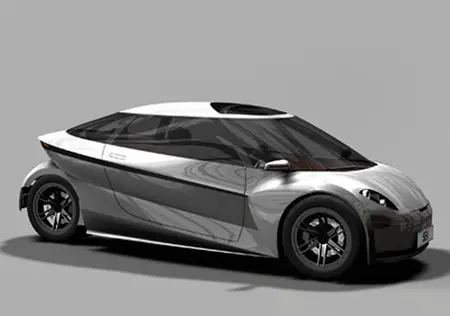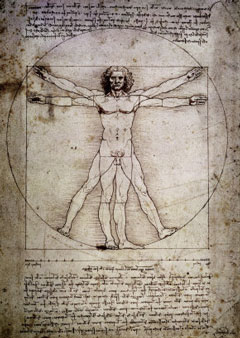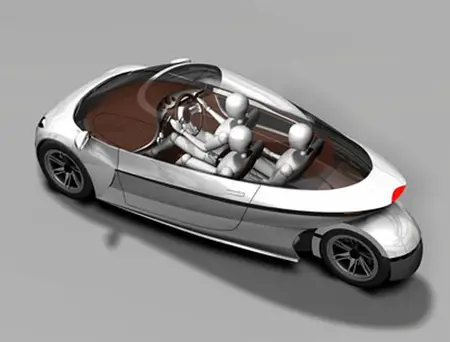Despite the fact that cars have been around for more than a
century, automakers have yet to find an answer to fundamental issues such as
how to make them more efficient without having to resort to
costly hardware, how
to make them less of a burden to our living environment and people's budgets? Ride
and car sharing may well change the way we perceive and use cars, but
the car itself has not changed much. Not really. If automakers are slow to act, newcomers get the chance to step up to the plate. Elon Musk did. Still, a Tesla that weighs 25-30 times more than the average driver (usually the only occupant) may not be the definitive answer. Practically all resources, incl. energy, go into moving around the 'device' that is supposed to transport us.
What if the automobile itself would move a little closer to what smart phones are offering? Be more cost- and time-efficient, less cumbersome, less self-serving, using less precious resources to begin with, and offering unique new selling points? Now there's a huge market. Apple's former CEO, Steve Jobs, made us aware that it is still the type of product that matters and that is able to shake up whole industries. He put one and one together (a stylish mobile phone and a proper internet
interface) and started the smart phone craze. What if someone would
combine the safety and comfort of an automobile with the maneuverability
and energy efficiency of a motor scooter, fuse them together into a new type of vehicle?



iPhone On Wheels
Steve Jobs once said: "design is not just what it looks like, design is how it works"*****. The 'New Isetta' described/depicted here will carry three more safely, economically, comfortably than any 'similarly-sized' hatchback is able to. * To be able to create a sleek shape (< 'click' to enlarge) - one of the biggest contributors to boosting energy economy whilst maintaining enough leeway, especially in the flanks - passengers don't sit next to each other. The configuration you see here is the EU/US version's, with the driver seated to the right**. The old Romans already knew that arches make for a stress-resistant construction. Subsequently, lighter materials can be used. The New Isetta has a Da Vinci-inspired cigar-like frame underneath the outer
panels and a dual-purpose rear cowling, covering the twin wheels and
integrating a flush-mounted rear bumper - a safety feature too**. 
What about Freude am Fahren? Well, a long wheelbase to narrow track ratio forms the best excuse to create a vehicle that will need to bank while cornering. Perhaps its nicest feature ***. Space-efficient use of the infrastructure (in the not too distant future) is a nice bonus. The way that three can be parked in two parking spots makes for safer boarding and exiting of the vehicle, plus a safe departure from standstill position. Also: when the driver has a feel for a car's compact outer dimensions, as opposed to driving a 10 sq.m. SUV, he/she will feel more at ease when the auto-pilot is switched on. As we all know, Google is experimenting with driverless cars. May 27th, 2o14: Google just revealed its robocar with which it will run tests (see picture above of the little car that looks like the Riddler's mind-drain device has been mounted on the rooftop).
 Think of the iSetta as a 'smart phone on wheels' - a platform that will hold the latest in 'connected' technology, incl. 'driverless'. Also think of it as a new 'automotive format'. Small cars like the Fiat 500, VW Beetle and the Mini proved to be strong 'formats'.
No wonder Fiat and Volkswagen came up with a New 500 and a New Beetle,
and BMW with a New Mini. The New Isetta is
a 'format' that looks equally promising. In the 50's three
German car companies each made their own version: the Isetta, the
Messerschmitt and the Heinkel. Trendy must-have for the smart phone generation, iconic design****, environmental consciousness, cost saving, handling and practicality -can- come together!
Think of the iSetta as a 'smart phone on wheels' - a platform that will hold the latest in 'connected' technology, incl. 'driverless'. Also think of it as a new 'automotive format'. Small cars like the Fiat 500, VW Beetle and the Mini proved to be strong 'formats'.
No wonder Fiat and Volkswagen came up with a New 500 and a New Beetle,
and BMW with a New Mini. The New Isetta is
a 'format' that looks equally promising. In the 50's three
German car companies each made their own version: the Isetta, the
Messerschmitt and the Heinkel. Trendy must-have for the smart phone generation, iconic design****, environmental consciousness, cost saving, handling and practicality -can- come together!
Ralph Panhuyzen @
* ReThinking the Automobile (<click to see how other newcomers went about).
As long as we cannot "beam me up, Scotty" from A to B, personal mobility will require a 'tangible transportation device'. On the other hand there is the challenge to prevent what Frost & Sullivan Sr. consultant David Frigstad calls the Kodak moment (<click).
There is more to personal mobility and people connecting than having cars roll off the assembly line. The car still represents the biggest consumer purchase most people do. A car's 'fuel bill' proves to be even more costly than most households' energy bill. No wonder young people are losing interest (<click) in what used to 'move' whole generations before them. Why should they? Smart phones and social media turn out to be less expensive and more effective when it comes to 'reaching people'. Researchers from the Berkeley Transportation Sustainability Research Center estimate that one shared car removes between 9 and 13 cars from the vehicle population. Interesting is what Hertz Corp. President Michel Taride has to say about the (click>) future of automobility.
As long as we cannot "beam me up, Scotty" from A to B, personal mobility will require a 'tangible transportation device'. On the other hand there is the challenge to prevent what Frost & Sullivan Sr. consultant David Frigstad calls the Kodak moment (<click).
There is more to personal mobility and people connecting than having cars roll off the assembly line. The car still represents the biggest consumer purchase most people do. A car's 'fuel bill' proves to be even more costly than most households' energy bill. No wonder young people are losing interest (<click) in what used to 'move' whole generations before them. Why should they? Smart phones and social media turn out to be less expensive and more effective when it comes to 'reaching people'. Researchers from the Berkeley Transportation Sustainability Research Center estimate that one shared car removes between 9 and 13 cars from the vehicle population. Interesting is what Hertz Corp. President Michel Taride has to say about the (click>) future of automobility.

** The New Isetta's rear bumper will actually "use" (invade) the front crumple zone of the vehicle that will slam onto the New Isetta's rear end. Simply physics. Ever "stopped short" by a tree or traffic pole?
Why have the driver seated to the right in the U.S. and Europe (and to the left in countries like the U.K. and Japan)? Here's why (the most frequent occurring type of frontal collision) > see right picture.
*** A combination of a low center of gravity, control arms at the front changing the wheel geometry, forcing the N.I. to lean - angle dependent on steering input (and speed) and G-force dependent active damping. Co-steering rear wheels operated at 45+ kph speeds may (also) be opted for. That should keep body roll in check and prevent the rear from side-sweeping.
**** The very concept of the N.I. challenges to do things differently - to
increase efficiency, reduce costs, use new materials, etc. Supply
chain and assembly may be streamlined, with suppliers even more in a
co-maker role. The front looks are kept 'neutral' so brands may
envisage their own trademark frontal designs. Front and rear sections,
containing the front and tail lights, can be swapped for easy repair, a
partial makeover or to create a different brand look. The N.I. has a (chocolate Easter) egg-like body: a lower 'skirted' half containing all
hardware, which is easily accessible because of the curved upper half
with its small roof section.
***** Steve Jobs realized that reinvention and an ongoing process of tackling issues is the best way to leap passed the competition, simply because you get to dictate the market rather than play catch up. Perhaps Detroit should look towards Silicon Valley to infuse some creativity. Below: U.S. market share per American car maker, over the period 1965-2012 (source: Wardsauto). It shows Detroit's shrinking presence on the U.S. car market, from more than 90% to less than half that percentage, although the tide seems to have turned in 2013.# Question is: will it hold?
Year GM - Ford - Chrysler Total American Motors
1965 49.6% 26.8% 14.3% 93.7% 3.0%
1970 38.9% 28.3% 14.9% 84.6% 2.5%
1980 44.2% 20.5% 09.1% 75.8% 2.0%
1990 35.2% 23.8% 12.0% 71.0% -
2000 28.0% 22.6% 14.2% 64.8% --
2009 19.6% 15.3% 08.8% 43.7% --
2011 19.2% 16.5% 10.5% 46.2% --
1970 38.9% 28.3% 14.9% 84.6% 2.5%
1980 44.2% 20.5% 09.1% 75.8% 2.0%
1990 35.2% 23.8% 12.0% 71.0% -
2000 28.0% 22.6% 14.2% 64.8% --
2009 19.6% 15.3% 08.8% 43.7% --
2011 19.2% 16.5% 10.5% 46.2% --
2012 17.5% 15.2% 11.2% 43.9% --
Below: GM "taking a giant leap where no one has gone before" with its PUMA project. "Look Obama, we tried"
#
@ Auctor intellectualis (and IP holder) was involved with the scientific study on car mobility in the Netherlands (one of the most densely populated countries in the world) which was held under the auspices of the NWO, the Netherlands Organization for Scientific Research (ISBN-13: 978-90-442-0015-7). The vehicle proposed here (also known as 'Smart ForThree') is OHIM (Office of Harmonization for the Internal Market) registered! It is not an open source project. Unauthorized use is strictly forbidden. If in doubt about the semantics of what is "authorized" (literally: of, by or from the author) and what is not (presenting or using what has been created by someone else as if it were yours) consult a legal expert. This presentation is put together for assessment purposes only.



No comments:
Post a Comment